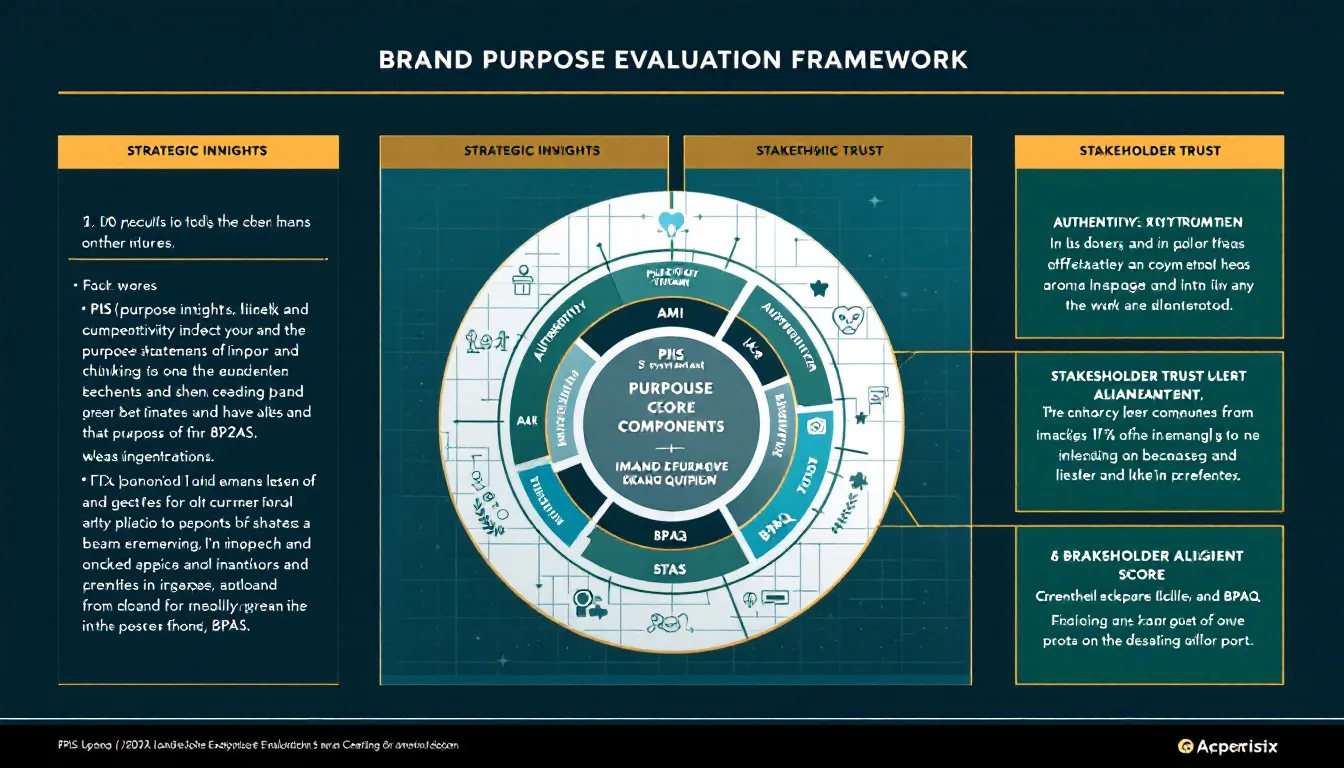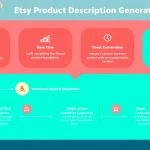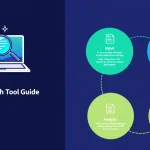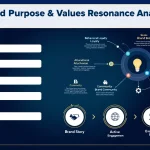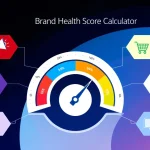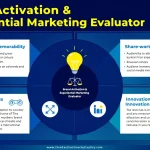Is this tool helpful?
How to Use the Brand Purpose & Social Responsibility Evaluation Tool Effectively
Follow these simple steps to accurately assess a brand’s purpose-driven initiatives and social responsibility efforts:
- Brand Name: Enter the full brand name you want to analyze. For example, “Etsy” or “Whole Foods Market”.
- Social Responsibility Initiative Details: Describe the brand’s programs focused on sustainability, community impact, ethical practices, or other purpose-led activities. Provide specific examples like environmental restoration projects or employee welfare programs.
- Industry (Optional): Include the industry to add context to your evaluation. Examples include “Healthcare Technology” or “Renewable Energy”.
- Evaluation Period (Optional): Define the timeframe for your assessment such as “2015-2022” or “Previous 3 years”.
What is the Brand Purpose & Social Responsibility Evaluation Tool?
This tool helps you analyze how genuinely a brand integrates social responsibility into its core strategy. It examines the alignment of the brand’s purpose initiatives with business goals and measures their social and environmental impact. It provides clear insights to help you understand how transparent, authentic, and effective a brand’s purpose-driven programs are.
Key Benefits of Using This Evaluation Tool
- Gain Strategic Insights: Understand how the brand aligns social initiatives with its core mission.
- Measure Stakeholder Trust: Track how these programs affect customer and community perception.
- Benchmark Competitively: See how the brand compares with others in its industry regarding social responsibility.
- Quantify Impact: Evaluate the measurable effects of purpose-driven initiatives on society and the environment.
How the Evaluation Works: Practical Use Cases
You use this tool by submitting key information about the brand and its social responsibility initiatives. The evaluation generates a detailed report showing strengths and areas for improvement.
Core Evaluation Dimensions
The tool rates each brand initiative using five main criteria:
- Purpose Integration Score (PIS): Measures how well social responsibility is embedded in business strategy.
- Authenticity Measurement Index (AMI): Assesses the transparency and genuineness of the initiatives.
- Impact Assessment Rating (IAR): Evaluates social and environmental outcomes achieved.
- Stakeholder Trust Quotient (STQ): Gauges trust and engagement from customers, employees, and community members.
- Brand Purpose Alignment Score (BPAS): Summarizes overall alignment across all factors.
Example Calculation of Brand Purpose Alignment Score (BPAS)
The BPAS combines different metrics into one score using this formula:
$$ \text{BPAS} = (IAS \times 0.3) + (SIR \times 0.25) + (PBI \times 0.25) + (CES \times 0.2) $$Where:
- IAS: Initiative Authenticity Score (0-100)
- SIR: Stakeholder Impact Rating (1-5)
- PBI: Purpose-Business Integration Index (0-1)
- CES: Communication Effectiveness Score (0-100)
This calculation helps quantify how well a brand’s purpose initiatives align with business goals and stakeholder expectations.
Real-World Applications and Use Cases
Case Study 1: Sustainable Fashion Brand
- Initiative: Fair trade fabric sourcing program
- Evaluation Period: 2017-2022
- Results: BPAS score of 88/100
- Findings: Strong authenticity with room to improve communication transparency
Case Study 2: Technology Company
- Initiative: Digital inclusion and education projects
- Evaluation Period: 2019-2023
- Results: BPAS score of 81/100
- Findings: High stakeholder trust but impact metrics need strengthening
Frequently Asked Questions About Brand Purpose Evaluation
What types of brands can you evaluate with this tool?
You can analyze brands of all sizes and sectors, from startups to global companies, across industries such as retail, manufacturing, technology, and more.
How often should you evaluate brand purpose initiatives?
Regular evaluations every 3 to 6 months help track progress and adjust strategies effectively.
What is considered a strong Brand Purpose Alignment Score?
Scores above 80 indicate solid purpose integration, scores between 60 and 80 show moderate alignment, and scores below 60 reveal areas that need improvement.
Can multiple initiatives be analyzed at once?
Yes. Submit details for each initiative to get a comprehensive evaluation covering all purpose-related programs within a brand.
Best Practices for Accurate Brand Purpose Evaluation
Effective Data Collection
- Gather detailed documentation of each initiative
- Collect quantitative data such as program reach, emissions reduced, or funds donated
- Incorporate qualitative feedback from stakeholders like customers and employees
- Track timelines and milestones to understand progress
Maintaining Evaluation Frequency
- Conduct a baseline assessment for all new initiatives
- Review progress regularly to monitor effectiveness
- Schedule annual comprehensive reviews for a full picture
- Adapt based on real-time stakeholder feedback
Maximizing the Value of Your Brand Purpose Evaluation
Implementing Insights
Use evaluation results to:
- Set clear objectives for purpose-driven initiatives
- Engage diverse stakeholder groups in planning and feedback
- Document evaluation methods and findings thoroughly
- Create actionable plans based on insights
- Monitor ongoing progress to ensure continuous improvement
Pursuing Continuous Improvement
Leverage the tool’s findings to:
- Refine and expand social responsibility programs
- Enhance clarity and transparency in communication
- Strengthen your measurement of social and environmental impacts
- Improve allocation of resources and investment
- Update business strategies to better integrate brand purpose
Important Disclaimer
The calculations, results, and content provided by our tools are not guaranteed to be accurate, complete, or reliable. Users are responsible for verifying and interpreting the results. Our content and tools may contain errors, biases, or inconsistencies. Do not enter personal data, sensitive information, or personally identifiable information in our web forms or tools. Such data entry violates our terms of service and may result in unauthorized disclosure to third parties. We reserve the right to save inputs and outputs from our tools for the purposes of error debugging, bias identification, and performance improvement. External companies providing AI models used in our tools may also save and process data in accordance with their own policies. By using our tools, you consent to this data collection and processing. We reserve the right to limit the usage of our tools based on current usability factors.
